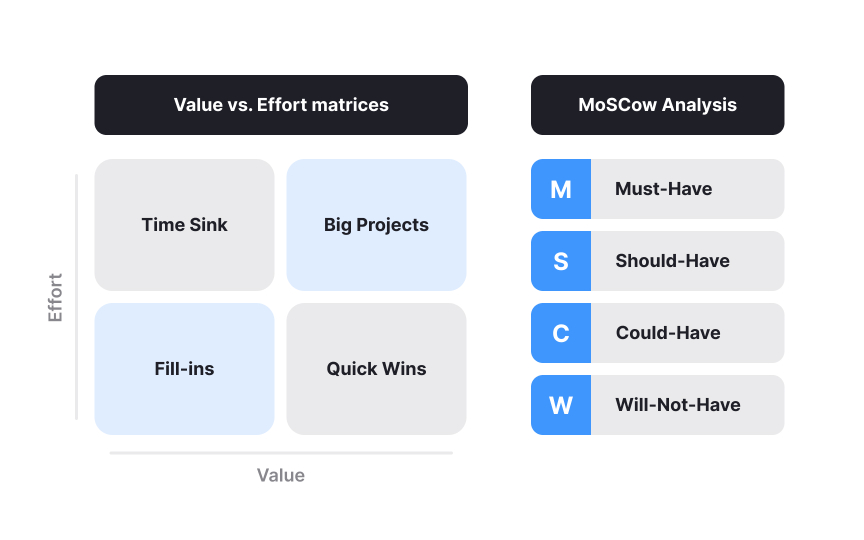Popular prioritization frameworks
Prioritization frameworks help product managers make objective decisions about what to build next. Here are several frameworks commonly used in product management:
- RICE scoring model evaluates features based on Reach (users impacted), Impact (effect on those users), Confidence (certainty about estimates), and Effort (resources required). This quantitative approach creates a single prioritization score to help rank initiatives.
- MoSCoW method categorizes features into Must-haves, Should-haves, Could-haves, and Won't-haves, creating a clear hierarchy that's easy to communicate to stakeholders.
- Value vs. Effort matrices plot initiatives based on their potential value against implementation effort, helping teams identify "quick wins" (high value, low effort) and avoid "money pits" (low value, high effort).
- Kano model focuses on customer satisfaction, categorizing features as basic needs (expected), performance features (more investment equals higher satisfaction), or delighters (unexpected features creating high satisfaction).
Each framework has strengths for different situations. Many product teams combine approaches or adapt frameworks to fit their specific context and decision-making style.[1]

